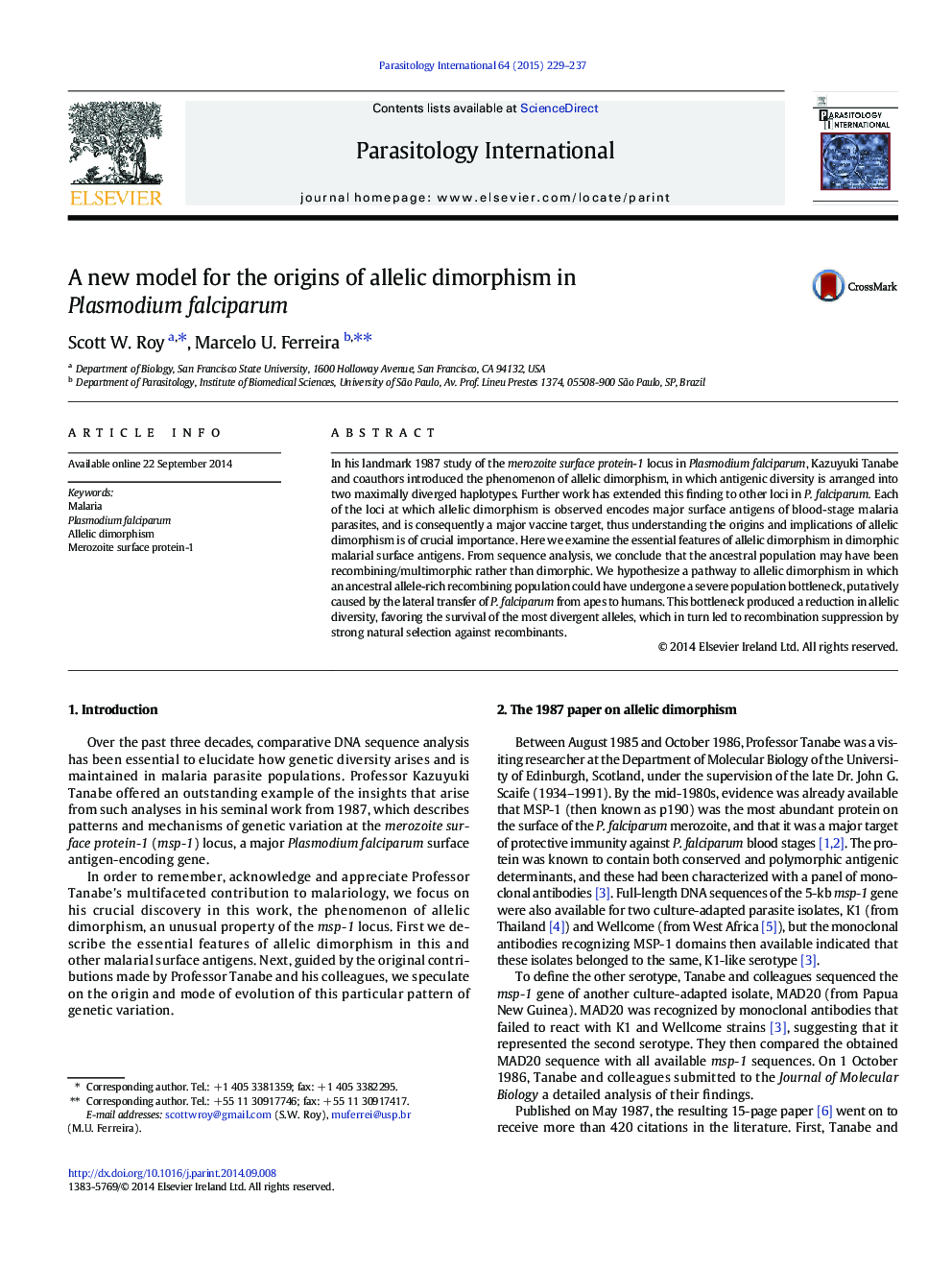| کد مقاله | کد نشریه | سال انتشار | مقاله انگلیسی | نسخه تمام متن |
|---|---|---|---|---|
| 6136503 | 1225462 | 2015 | 9 صفحه PDF | دانلود رایگان |

- Allelic dimorphism is an unusual property of some Plasmodium falciparum antigens.
- The origin and evolution of this pattern of genetic variation remain unclear.
- A severe population bottleneck may have reduced allelic diversity to just two types.
- Strong natural selection suppressed recombination between dimorphic alleles.
In his landmark 1987 study of the merozoite surface protein-1 locus in Plasmodium falciparum, Kazuyuki Tanabe and coauthors introduced the phenomenon of allelic dimorphism, in which antigenic diversity is arranged into two maximally diverged haplotypes. Further work has extended this finding to other loci in P. falciparum. Each of the loci at which allelic dimorphism is observed encodes major surface antigens of blood-stage malaria parasites, and is consequently a major vaccine target, thus understanding the origins and implications of allelic dimorphism is of crucial importance. Here we examine the essential features of allelic dimorphism in dimorphic malarial surface antigens. From sequence analysis, we conclude that the ancestral population may have been recombining/multimorphic rather than dimorphic. We hypothesize a pathway to allelic dimorphism in which an ancestral allele-rich recombining population could have undergone a severe population bottleneck, putatively caused by the lateral transfer of P. falciparum from apes to humans. This bottleneck produced a reduction in allelic diversity, favoring the survival of the most divergent alleles, which in turn led to recombination suppression by strong natural selection against recombinants.
38
Journal: Parasitology International - Volume 64, Issue 3, June 2015, Pages 229-237